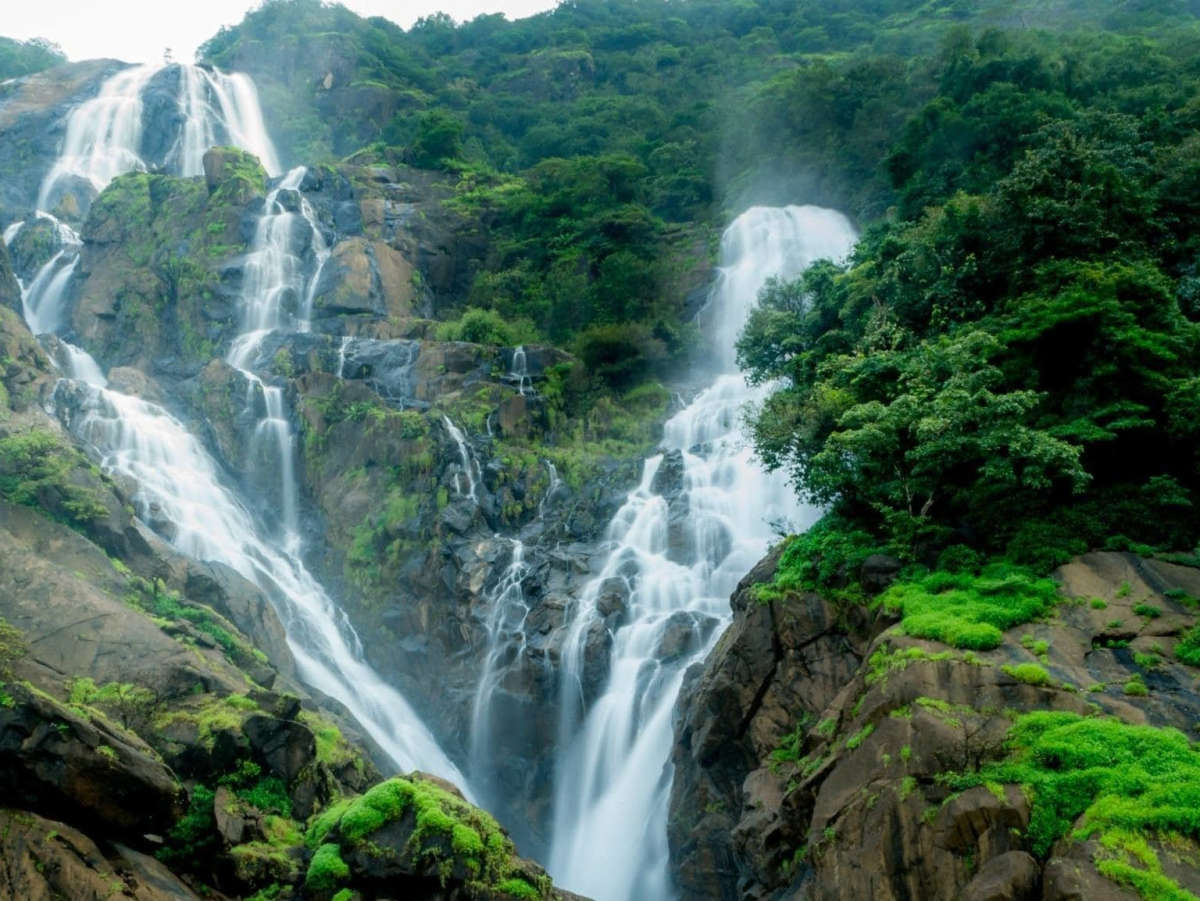Adventure Awaits: Thrills and Beauty of the Dudhsagar Trek


For adventurers seeking an experience that blends nature’s magnificence with the rush of a thrilling journey, the Dudhsagar Trek stands as an unforgettable expedition. Nestled in the Western Ghats, straddling the Goa-Karnataka border, the Dudhsagar Falls, meaning “Sea of Milk,” roars down the rocky cliffs in a spectacle of white froth. But what makes this trek so captivating goes beyond the cascade itself—it’s the symphony of forest trails, railway tracks, tunnels, and wilderness that beckons hikers year after year.
Dudhsagar Falls: A Natural Wonder
Standing at approximately 310 meters (1017 feet), Dudhsagar is among India’s tallest waterfalls. During the monsoon, the falls swell into a thunderous torrent, sending mist drifting over the surrounding forest canopy. The dramatic scene has earned Dudhsagar a place on numerous lists of India’s most beautiful natural attractions. The Indian Railways’ famed Konkan route, skirting close to the falls, offers a fleeting yet mesmerizing view for train passengers.
Geologically, the region forms part of the Western Ghats, a UNESCO World Heritage site celebrated for its biodiversity. According to the Botanical Survey of India, this mountain range houses over 7,400 species of flowering plants, many of which flourish around the Dudhsagar area, making the trek not merely a journey to a waterfall but a stroll through a living botanical gallery.
The Trekking Routes: Choosing Your Path
Several routes lead to Dudhsagar Falls, each offering unique challenges and rewards. The two most popular options are:
1. Castle Rock to Dudhsagar
Distance: Approximately 14 km one way
Difficulty Level: Moderate
Highlights: Scenic railway bridges, tunnels, dense forests
Beginning at Castle Rock railway station in Karnataka, trekkers follow railway tracks winding through the Ghats. This path offers iconic moments like walking through pitch-dark tunnels and emerging to vistas of deep valleys. Though walking along the railway has been restricted in recent years due to safety regulations, some organized treks still incorporate sections of the track legally and safely.
2. Kulem to Dudhsagar
Distance: Approximately 11 km one way
Difficulty Level: Moderate to challenging
Highlights: Forest trails, streams, rich wildlife
This route starts from Kulem in Goa and takes trekkers through Bhagwan Mahaveer Wildlife Sanctuary. It’s a trail that delights nature lovers, offering glimpses of langurs, Malabar giant squirrels, and diverse birdlife. Trekkers should be prepared for slippery trails and water crossings, especially during or shortly after the monsoon season.
Best Time to Trek Dudhsagar Falls
While Dudhsagar dazzles during the monsoon months of June to September, trekking at this time comes with significant challenges. The trails can become dangerously slippery, river crossings swell, and leeches are a common nuisance. For a safer yet still magnificent experience, the post-monsoon period from October to early February is often recommended. During these months, the waterfall remains robust, the skies are clear, and the forest breathes freshness without the extremes of monsoon fury.
Permits and Guidelines
Dudhsagar Falls lie within the Bhagwan Mahaveer Wildlife Sanctuary. Visitors entering through Kulem require forest department permits, which can be arranged on-site or via local tour operators. Trekking groups should always check the current regulations, as access policies can change for conservation or safety reasons. For example, the Indian Railways and forest authorities periodically restrict trekking along railway tracks to prevent accidents.
Trekkers must respect local rules, avoid littering, and leave no trace behind. The Western Ghats’ delicate ecosystem hosts several endangered species, and preserving its integrity is a shared responsibility.
Preparation and Safety Tips
Though Dudhsagar Trek is not a high-altitude challenge like Himalayan treks, it demands decent fitness and preparation:
Wear sturdy trekking shoes with a good grip.
Carry sufficient water; streams may not always be safe for drinking.
Pack light rain gear even outside monsoon months.
Protect electronic gadgets from moisture and mist.
Avoid solo trekking; the forest trails can be confusing.
According to seasoned trek leaders from reputable organizations like the Goa Trekking Association, groups should also inform local forest officials of their plans and expected return times for safety.
Cultural and Local Insights
Beyond the falls, Dudhsagar’s region holds cultural interest. The surrounding areas once formed part of historic Portuguese Goa, evident in the architectural styles of nearby villages and old railway stations. Local folklore narrates tales of a princess bathing beneath the falls, hence the name “Sea of Milk.” Such stories add charm to the trek, infusing it with a blend of nature and legend.
Getting There
By Rail: The nearest major railway stations are Castle Rock, Kulem, and Madgaon. Trains along the South Western Railway and Konkan Railway networks serve these stations well.
By Road: Kulem is accessible from Goa by taxi or local buses. From Bangalore, the drive via NH48 takes approximately 8–10 hours.
Travelers often combine the trek with visits to nearby attractions, such as the Tambdi Surla Temple or spice plantations, making the adventure a richer Goan experience.
The Dudhsagar Experience
Ultimately, the Dudhsagar Trek is more than just a trail leading to a waterfall. It’s a journey into the Western Ghats’ verdant heart, where nature, adventure, and history intertwine. Whether you choose the echoing tunnels of Castle Rock or the forest trails from Kulem, each step offers the promise of discovery.
For those who yearn for the thrill of trekking and the serenity of breathtaking natural vistas, Dudhsagar awaits—a roaring cascade, a sea of milk, and a trail into nature’s embrace.
Leave a comment